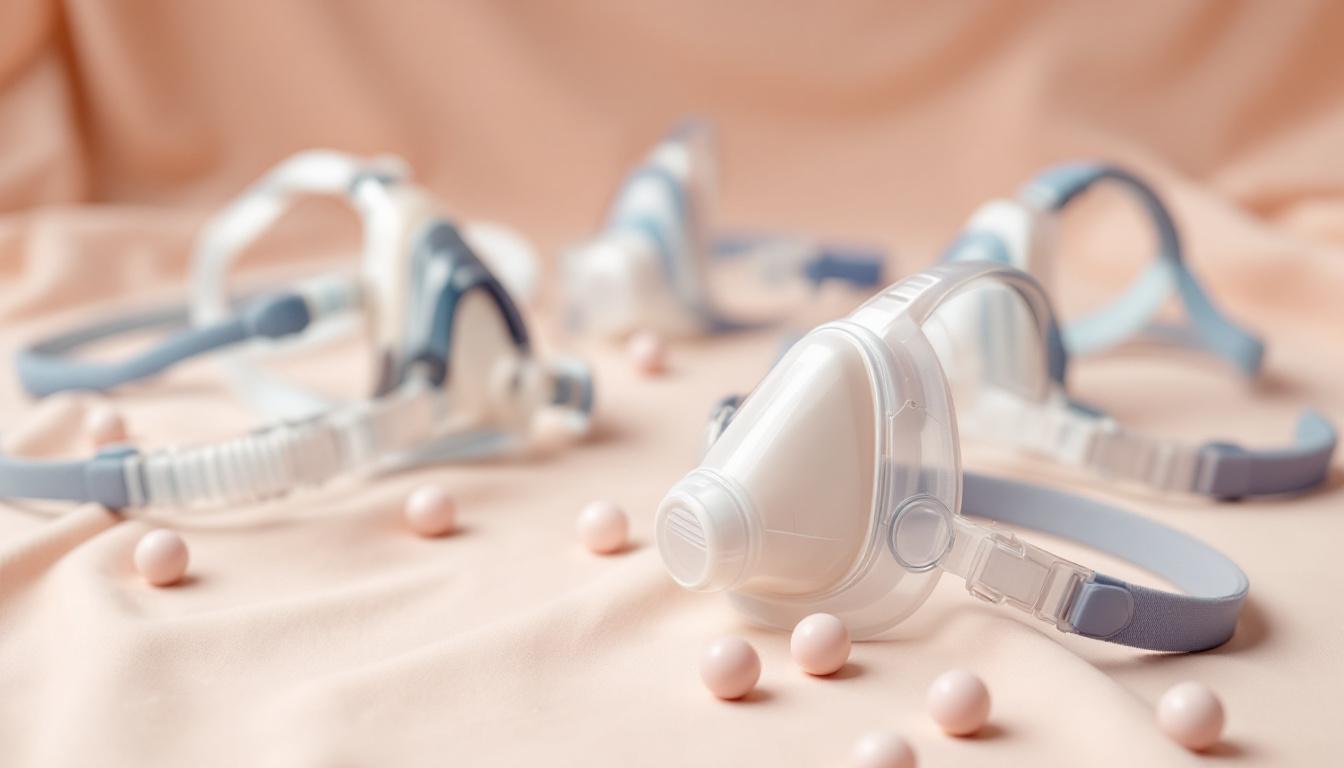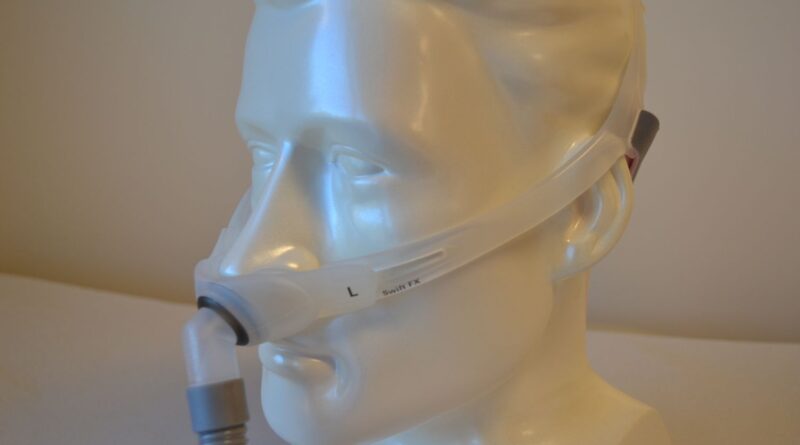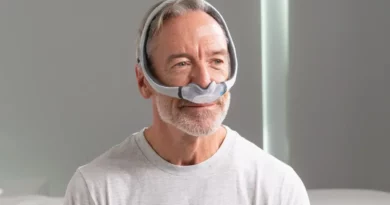How to Choose the Right CPAP Mask for Your Sleep Therapy Needs
Continuous Positive Airway Pressure (CPAP) therapy is a common treatment for obstructive sleep apnoea, a condition that affects millions of people worldwide. One of the most critical components of CPAP therapy is the mask, which delivers the pressurised air necessary to keep the airways open during sleep. Choosing the right CPAP mask is essential for ensuring comfort, compliance, and effectiveness of the therapy. This guide will explore the various types of CPAP masks available, factors to consider when selecting a mask, and tips for optimising your sleep therapy experience.
Understanding the Different Types of CPAP Masks
CPAP masks come in various styles, each designed to cater to different preferences and needs. Understanding the types of masks available can help you make an informed decision.

Nasal Masks
Nasal masks cover only the nose and are one of the most popular choices among CPAP users. They are generally lightweight and provide a comfortable fit for those who breathe through their nose during sleep. Nasal masks are suitable for individuals who do not require high pressure settings and prefer a less obtrusive option.
However, nasal masks may not be ideal for those who frequently breathe through their mouths while sleeping. In such cases, additional accessories like chin straps may be necessary to ensure effective therapy.
Read more at: Top CPAP Mask Brands Compared: Which One Is Best for You
Full Face Masks
Full face masks cover both the nose and mouth, making them an excellent choice for individuals who breathe through their mouths or have nasal congestion. These masks provide a secure seal and are often recommended for higher pressure settings, as they can accommodate a greater airflow without leakage.
While full face masks offer comprehensive coverage, they can be bulkier and may feel less comfortable for some users. Finding the right fit is crucial, as an improper seal can lead to air leaks and reduced effectiveness of the therapy.
Nasal Pillows
Nasal pillows are a minimalist option that consists of small silicone or gel cushions that fit directly into the nostrils. This type of mask is ideal for those who prefer a less invasive option and want to maintain a clear field of vision while sleeping.
Despite their advantages, nasal pillows may not be suitable for everyone. Users who experience nasal congestion or require higher pressure settings may find them less effective. Additionally, individuals who move around a lot during sleep may struggle with maintaining a proper seal.
Hybrid Masks
Hybrid masks combine features of both full face masks and nasal pillows, offering a versatile solution for users with varying needs. They typically have a full face design but incorporate nasal pillows for a less obstructive feel. This type of mask can be beneficial for those who want the benefits of both styles.
However, hybrid masks may require some adjustment and may not be suitable for everyone. It is essential to try different types to determine which one works best for your unique sleep therapy requirements.
Factors to Consider When Choosing a CPAP Mask
When selecting a CPAP mask, several factors should be taken into account to ensure optimal comfort and effectiveness. Understanding these factors can help you make a more informed decision.
Comfort and Fit
Comfort is paramount when it comes to CPAP therapy. A mask that fits well will not only enhance your comfort but also improve compliance with the therapy. It is essential to choose a mask that fits snugly without being overly tight, as this can lead to discomfort and skin irritation. Read more about irritation on https://www.physics.purdue.edu/primelab/safety/HCP-2012-Refresher/Hazard%20Communication%20Program-2012/Hhaz2/HH-510.htm
Most manufacturers offer sizing guides and fitting tools to help you find the right size. It is advisable to try on different masks and adjust the straps to find the best fit. Remember that a proper seal is crucial for effective therapy, so ensure that the mask does not leak air during use.
Material and Design
The materials used in the construction of CPAP masks can significantly impact comfort and usability. Look for masks made from soft, hypoallergenic materials that are gentle on the skin. Additionally, consider the design features, such as adjustable straps and cushioning, which can enhance the overall comfort of the mask.
Some masks come with additional features, such as venting systems that reduce noise and enhance airflow. These features can contribute to a more pleasant sleep experience, making it easier to adapt to CPAP therapy.
Pressure Settings and Therapy Needs
Your specific therapy needs will also influence your choice of CPAP mask. If you require higher pressure settings, a full face mask may be more suitable, as it can accommodate greater airflow without compromising the seal. Conversely, if your pressure settings are lower, a nasal mask or nasal pillows may suffice.
Consulting with your healthcare provider or sleep specialist can provide valuable insights into your therapy needs and help you select the most appropriate mask for your situation.
Tips for Optimising Your CPAP Mask Experience
Once you have chosen the right CPAP mask, there are several strategies you can employ to optimise your experience and ensure effective therapy.
Regular Cleaning and Maintenance
Proper cleaning and maintenance of your CPAP mask are essential for hygiene and longevity. Regularly wash the mask components with mild soap and warm water, and allow them to air dry completely before reassembling. This practice helps prevent the buildup of bacteria and ensures that your mask remains in good condition.
It is also advisable to replace your mask and its components as recommended by the manufacturer. Over time, masks can wear out, leading to leaks and reduced effectiveness. Keeping track of replacement schedules can help maintain optimal therapy.
Adjusting to Your Mask
Adjusting to a new CPAP mask can take time, and it is normal to experience some discomfort initially. Gradually increasing the amount of time you wear the mask each night can help your body acclimatise to the new sensation. Consider wearing the mask while awake to get used to the feel of it before using it during sleep.
If you continue to experience discomfort or issues with your mask, do not hesitate to consult your healthcare provider. They can offer guidance and recommend alternative options if necessary.
Monitoring Your Sleep Quality
Monitoring your sleep quality is crucial for assessing the effectiveness of your CPAP therapy. Many CPAP machines come equipped with data tracking features that allow you to monitor your usage, pressure settings, and any events of apnoea. Reviewing this data can help you and your healthcare provider make informed decisions about your therapy. Click here to find more about effectiveness.
Additionally, keeping a sleep diary can provide insights into your sleep patterns and any changes you experience while using CPAP therapy. This information can be valuable for making adjustments to your mask or therapy as needed.
Conclusion
Choosing the right CPAP mask is a vital step in ensuring the success of your sleep therapy. By understanding the different types of masks available, considering key factors such as comfort and fit, and implementing strategies for optimising your experience, you can enhance the effectiveness of your therapy and improve your overall sleep quality. Always consult with your healthcare provider for personalised recommendations and support throughout your CPAP journey.


